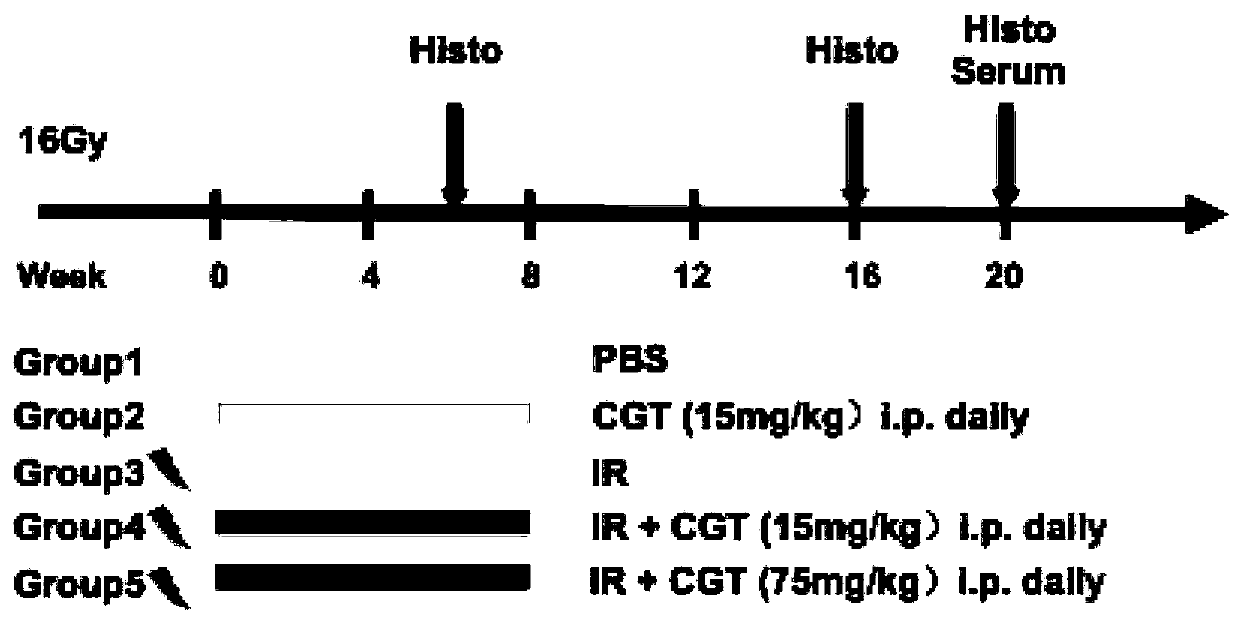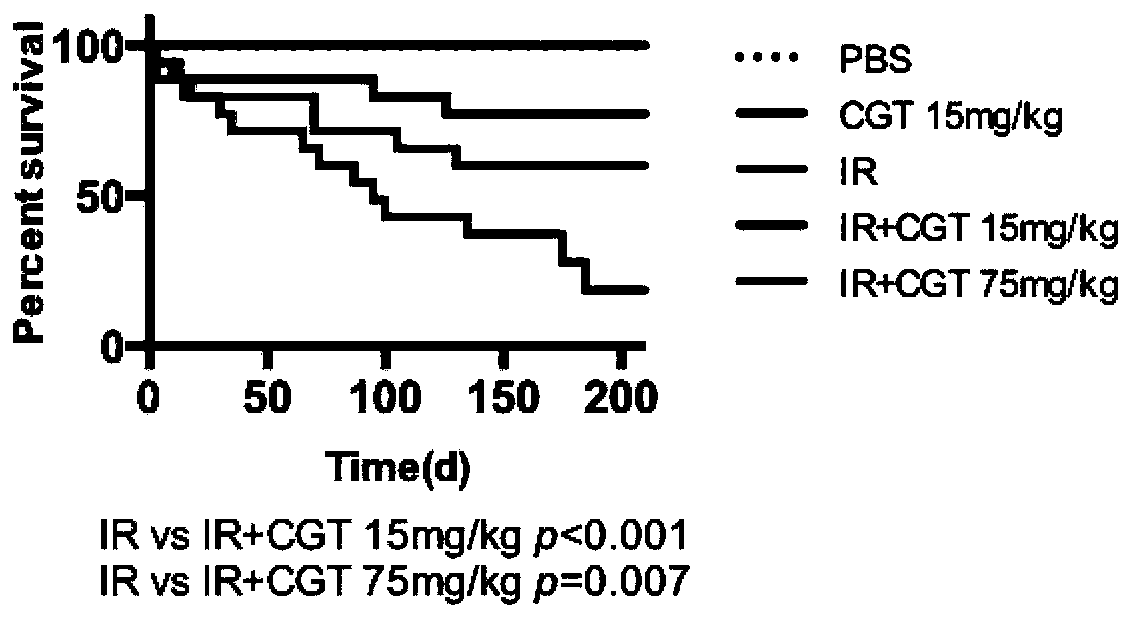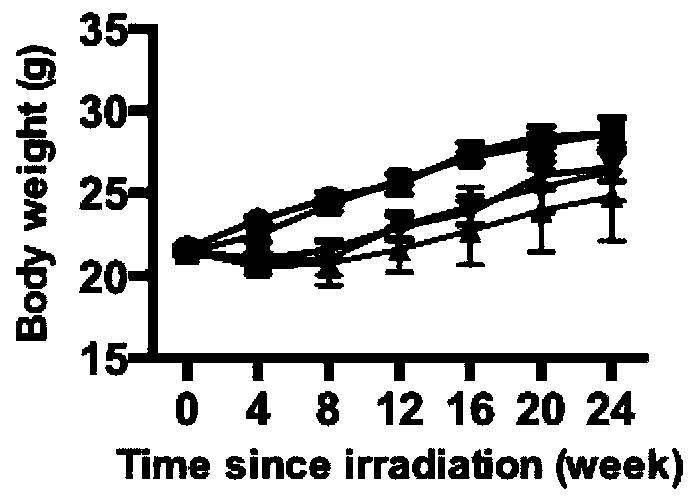Application of cilengitide in preparation of drugs for preventing radioactive lung injury
A radiation-induced lung injury and cilengitide technology, which is applied in the field of cilengitide in the preparation of medicines for the prevention and treatment of radiation-induced lung injury, can solve problems such as the unclear role of cilengitide, and improve the degree of lung tissue fibrosis and Health Status, Increased Survival Time, Good Safety Effects
- Summary
- Abstract
- Description
- Claims
- Application Information
AI Technical Summary
Problems solved by technology
Method used
Image
Examples
Embodiment 1
[0030] Embodiment 1 The experiment of cilengitide in the mouse model of radiation-induced lung injury
[0031] Experiments were performed in a mouse model of radiation-induced lung injury. By irradiating the mouse chest with a single large dose of 16Gy, a mouse model of radiation lung injury was established, and the degree of lung fibrosis and the health and survival of the mice were observed.
[0032] A total of 250 8-week-old female C57BL / 6 wild-type mice were selected and divided into five groups. Mice in the placebo group (50) and the simple administration group (50) did not receive radiation. Another 150 mice received a single high-dose chest irradiation of 16Gy. Then they were divided into simple irradiation group (50 rats), irradiation+15mg / kg cilengitide group (50 rats) and irradiation+75mg / kg cilengitide group (50 rats). After grouping, the mice in the administration group were given 15 mg / kg or 75 mg / kg cilengitide (dissolved in PBS), once a day, intraperitoneally...
Embodiment 2
[0033] Example 2 The effect of cilengitide in alleviating radiation-induced lung injury in mice
[0034] Such as figure 2 Shown: During the observation period of 28 weeks, the mice in the normal control group and the cilengitide administration group alone did not die. The survival time of the mice in the radiotherapy group was significantly shorter than that in the control group. By the end of 28 weeks, only 2 mice survived, and the median survival time was only 87 days. Four mice died in the low-dose irradiation group (daily 15mg / kg cilengitide intraperitoneal injection for 8 weeks) at 28 weeks, and the irradiation high-dose group (daily 75mg / kg cilengitide intraperitoneal injection 8 weeks) At 28 weeks, 7 mice died. The log-rank test indicated that the survival of the mice in the two groups of radiation administration groups was significantly better than that of the simple radiation group. It was more significant in the high dose group (P=0.04).
[0035] The results sugg...
Embodiment 3
[0052] Medicine 1 for preventing and treating radiation-induced lung injury, which includes effective doses of cilengitide and pharmaceutically acceptable sucrose; wherein, the content of cilengitide is 15 mg / kg.
PUM
| Property | Measurement | Unit |
|---|---|---|
| density | aaaaa | aaaaa |
Abstract
Description
Claims
Application Information
 Login to View More
Login to View More - R&D Engineer
- R&D Manager
- IP Professional
- Industry Leading Data Capabilities
- Powerful AI technology
- Patent DNA Extraction
Browse by: Latest US Patents, China's latest patents, Technical Efficacy Thesaurus, Application Domain, Technology Topic, Popular Technical Reports.
© 2024 PatSnap. All rights reserved.Legal|Privacy policy|Modern Slavery Act Transparency Statement|Sitemap|About US| Contact US: help@patsnap.com










